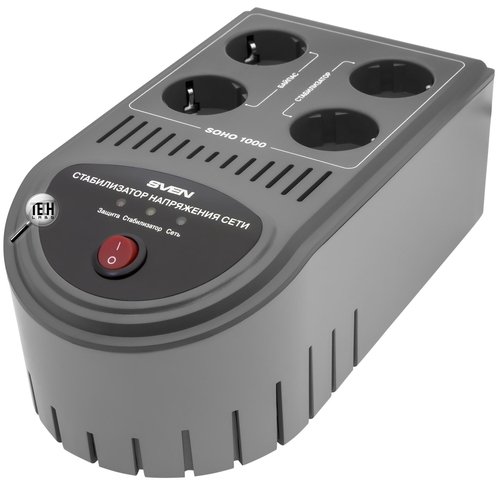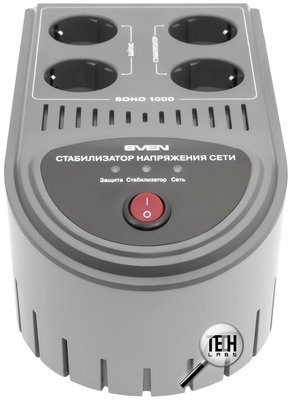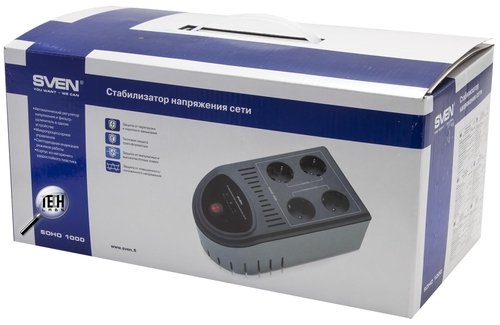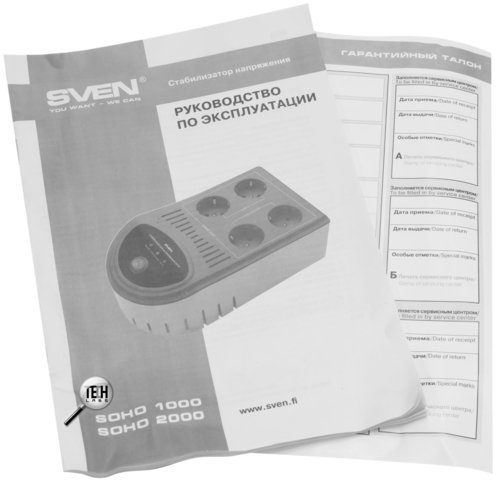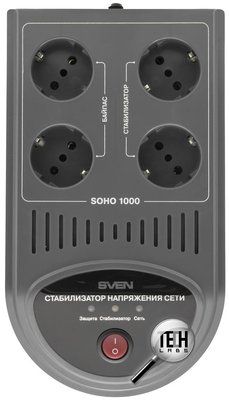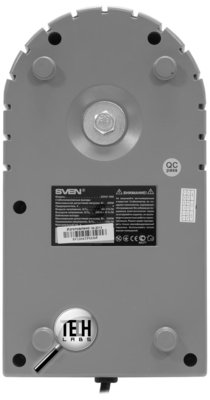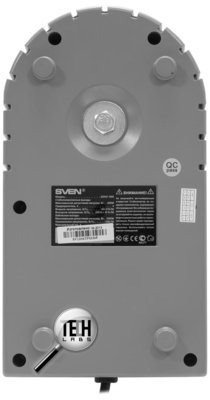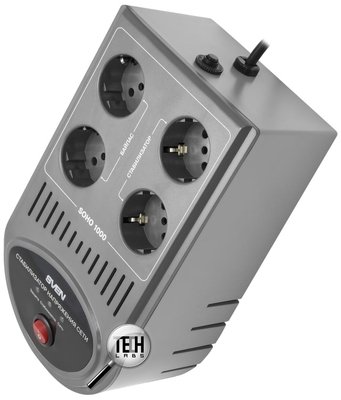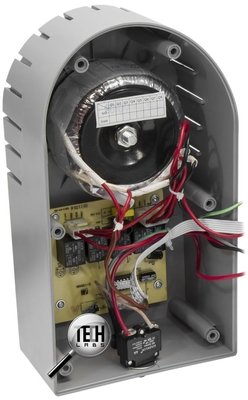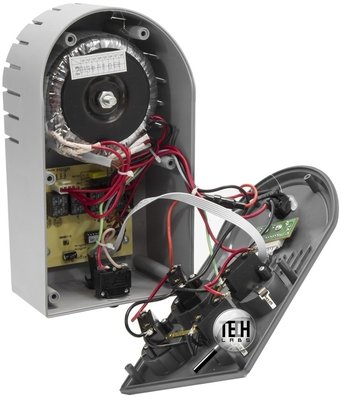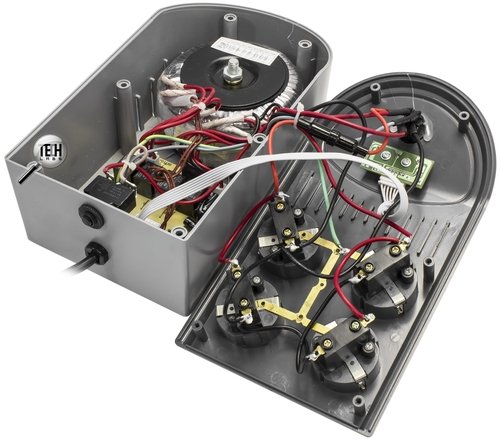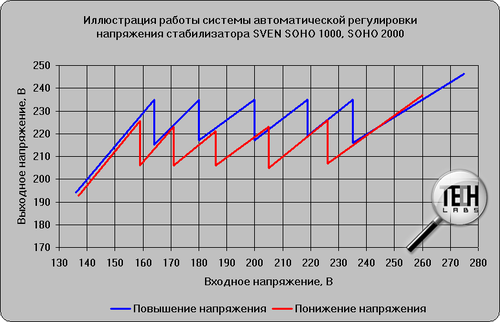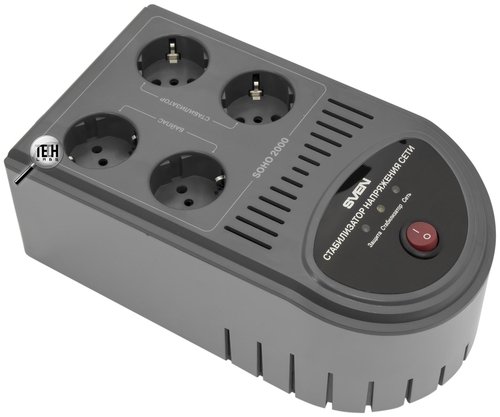SVEN Company offers a quite wide gamut of automatic voltage regulators and there are very interesting models among them. For example, recently we tested AVR-1000 and AVR-1000 LCD and they are really worthy to be praised – both of them are able to operate within the widest range of input voltages, keeping the output amplitude within hard bounds. But today we familiarize ourselves with a new SOHO line (SVEN SOHO 1000 and SVEN SOHO 2000), devices having been manufactures in the cases of the surge protector format. It turns out that it is not only practical from the standpoint of equipment protection, but it is convenient for connection, because there will be easily accessible sockets. Within the framework of this article we will test at once two automatic voltage regulators with a capacity of 1000 and 2000 volt-ampere.
Package content
So long as every automatic voltage regulator is a self-sufficient and accomplished device, then there are no additional accessories in the delivery set – they are not required at all. But the package content is supplemented with the Operation Manual only. It is better to read it carefully, by the way, because the operation of such equipment entails some subtleties. For example, in the mode of stabilizing the output power falls down perceptibly as compared with the bypass power, i.е. when direct connected.
Construction
SVEN SOHO 1000 and SVEN SOHO 2000 automatic voltage regulators are superficially absolutely similar to each other; they differ from each other by the output power only, which is conditioned by a transformer mounted inside. Every device is assembled in a plastic case consisting of two halves and fixed with screws.
They have small cast legs to be placed on horizontal surfaces. Unfortunately, the wall mounting variant is not provided. But on the other hand the case abounds in perforating apertures, which are beneficial for the best transformer cooling.
Sockets are assembled in the most convenient place – from above. There are four sockets in total, however only two outputs are stabilized, other outputs are bypass ones, i. е. they are connected directly to the power supply network. Everything is clearly indicated through corresponding inscriptions.
There is the main power switch and three LED indicators there as well, which display operation modes.
The internal assembly of automatic voltage regulators is diabolically simple. Toroidal transformers with auxiliary taps from the winding are used to regulate the amplitude. Stages are switched over by AFE BRD-SS-112L relay with 10 millisecond contact-actuation time and the maximum normalized commutation power equal to 3000 volt-ampere. Simply stated, a reserve is provided both for 1000 VА and for 2000 VА. They are controlled by means of a simple circuit with Holtek HT46R064B microcontroller. At that the circuit looks very unloaded, as the main components are soldered on the second side by the surface mounting.
The assembly quality is excellent: every soldering is of high quality, connectors are fixed reliably with glue and wires are thoroughly assembled in bundles with the help of plastic straps. Power lines are parted with soldering also. Reliability and longevity of contacts cause no concern. In general, everything is assembled quite simple, but in a quality manner.
Practical testing
Since both devices differ from each other only by physical dimensions of transformers due to their different power, then electrical specifications, in particular, operation logic of the stabilizing system is identical. That is the reason why we provide one diagram, because the second diagram will differ in the measurement error and calibration only. In general terms the adjustment of automatic voltage regulators is quite simple and they can operate in the wide range of input voltages. You can clear see in the diagram that they are oriented to maintain the equipment operability in conditions of low amplitudes. Four stages are used at once to increase the voltage, but only one stage is used for decreasing. Devices can operate in the range approximately from 136 to 275 V. At that the output voltage will be from 193 to 246 V. In other words, the accuracy fits in the range -16… +7 percent. The lower bound turns out not very nice, but it is necessary to understand that such substantial slumps will be only with critically low input level – up to 150 V.
The switching time is conditioned by used relays and in this case it makes maximum 10 ms. Therefore during the device operation we have not fixed a single failure even when we have used sensitive appliances. The heating of transformers gives rise to no complaints if power has been chosen correctly. Cores and windings are not heated over 45 °C even during operation with the rated efficiency for a long time. That is, the case can be warm a little bit, but it does not threaten to the reliability.
Conclusion
SVEN SOHO 1000 and SVEN SOHO 2000 automatic voltage regulators deserve the excellent mark. From the constructional point of view their design is simple; however, the realization of main moments causes no censures. The case with four sockets is convenient for connection and the regulation system is oriented to critically low output amplitudes. Due to this fact the protected equipment will be able to operate normally even if there is about 150 V instead of 230 V in a socket. In addition, very democratic prices of devices gladden as well.
Photos from TECHLABS studio, photographer Kirill Kruchinin


